6/19/2025

AB
Top 6 Benefits of Using a Unified Data Platform in 2025
A Unified Data Platform (UDP) intelligently ingests, processes, governs, and delivers real‑time and historical data from every source - across clouds, on‑prem, and edge - into one seamless interface. In 2025, the top benefits of using a Unified Data Platform include breaking down silos, accelerating insights, enforcing governance, empowering self‑service, cutting costs, enabling AI/ML, and meeting global compliance requirements.

Why fast-growing teams are ditching scattered tools for smarter data infrastructure
If you're running on 10+ dashboards, 5 data tools, and a dozen spreadsheets just to answer one business question - you’re not alone. Most modern teams are drowning in disconnected data systems that slow them down, create duplicate work, and leave everyone second-guessing their numbers.
That’s why Unified Data Platforms (UDPs) are gaining ground in 2025.
Instead of stitching together analytics, governance, orchestration, and reporting across multiple tools, a UDP brings everything into one place. Think fewer bottlenecks, faster decisions, and a shared source of truth for analysts, engineers, and business leaders alike.
In this post, we’ll break down the 6 biggest benefits of using a Unified Data Platform - based on what’s actually working inside data-forward startups and growing teams.
Top 6 Benefits of Unified Data Platform
1. Eliminate Data Silos & Fragmentation
Why it matters: 81% of enterprise leaders report that data is trapped in silos across departments and clouds - slowing innovation and increasing risk.
UDP Solution: A batch-based ingestion layer unifies sources like databases, spreadsheets, and APIs into a governed workspace.
Real-world win: Fintech firms using a UDP saw a 40% reduction in data integration projects, freeing engineers for higher-value work.
🔹 One of the major Benefits of Using a Unified Data Platform is unifying fragmented data into one consistent layer - eady for transformation and insight.
2. Accelerate Time-to-Insight
Faster analytics: Platforms like Autonmis enable fast batch-based insights using pre-scheduled workflows and linked notebooks (ELT or ETL).
Business impact: Retail teams can re-run sales dashboards or alerts on fresh data every morning - making pricing or inventory decisions before store hours begin.
Insider tip: Most business use cases don’t require real-time - scheduled ELT pipelines and analyst-friendly notebooks reduce latency with less overhead.
🔹 In 2025, a key Unified Data Platform benefit is helping teams iterate faster, even without real-time infrastructure.
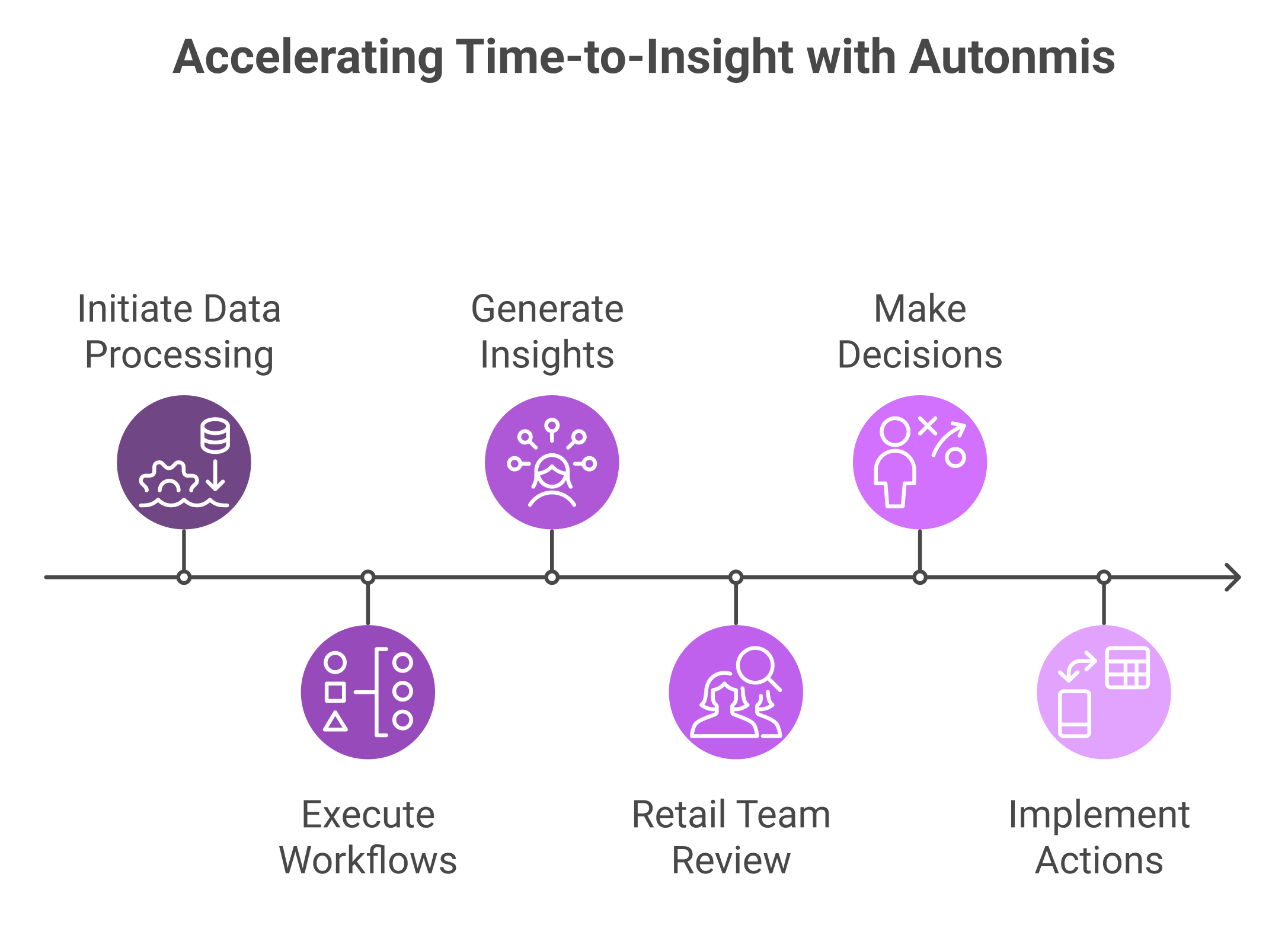
Checkout: What is a Unified Data Platform and Why Do Businesses Need One?
3. Empower Self-Service Analytics & Low-Code Data Products
User-friendly UI: Analysts can build dashboards using drag-and-drop BI notebooks. Business users receive alerts, reports, and chart updates without technical help.
AI assistant support: Autonmis’ “Autonmist” helps scaffold notebooks, generate SQL, and recommend chart types - making insights accessible to everyone.
ROI stat: Companies enabling self-service see up to 60% fewer internal IT requests, translating into ~$1M in cost savings annually.
🔹 Using a Unified Data Platform in 2025 means non-technical users can generate value without heavy DevOps support.
4. Reduce Total Cost of Ownership (TCO)
Tool consolidation: Swapping out multiple point tools for one UDP platform cuts licensing and support overhead by up to 50%.
Operational efficiency: Modular backend + batch notebook compute = lower infra costs and easier scheduling, with fewer moving parts.
Example metric: IDC reports $29,300 in annual savings per $100M in revenue for businesses consolidating into unified data platforms.
🔹 The Benefits of Unified Data Platform deployment include long-term savings through fewer tools, reduced duplication, and leaner teams.
5. Enable AI-Assisted Analytics
What you get today: With tools like Autonmis, embedded assistants help users auto-generate SQL, navigate notebooks, and scaffold chart-ready outputs.
No ML infra required: There’s no need for dedicated model training pipelines or feature stores - users can apply LLM-assisted exploration within existing data.
Competitive edge: Companies using AI copilots for dashboarding and reporting save hours per insight and reduce cognitive load for analysts.
🔹 Using a Unified Data Platform in 2025 means AI assistance is baked in - not bolted on.
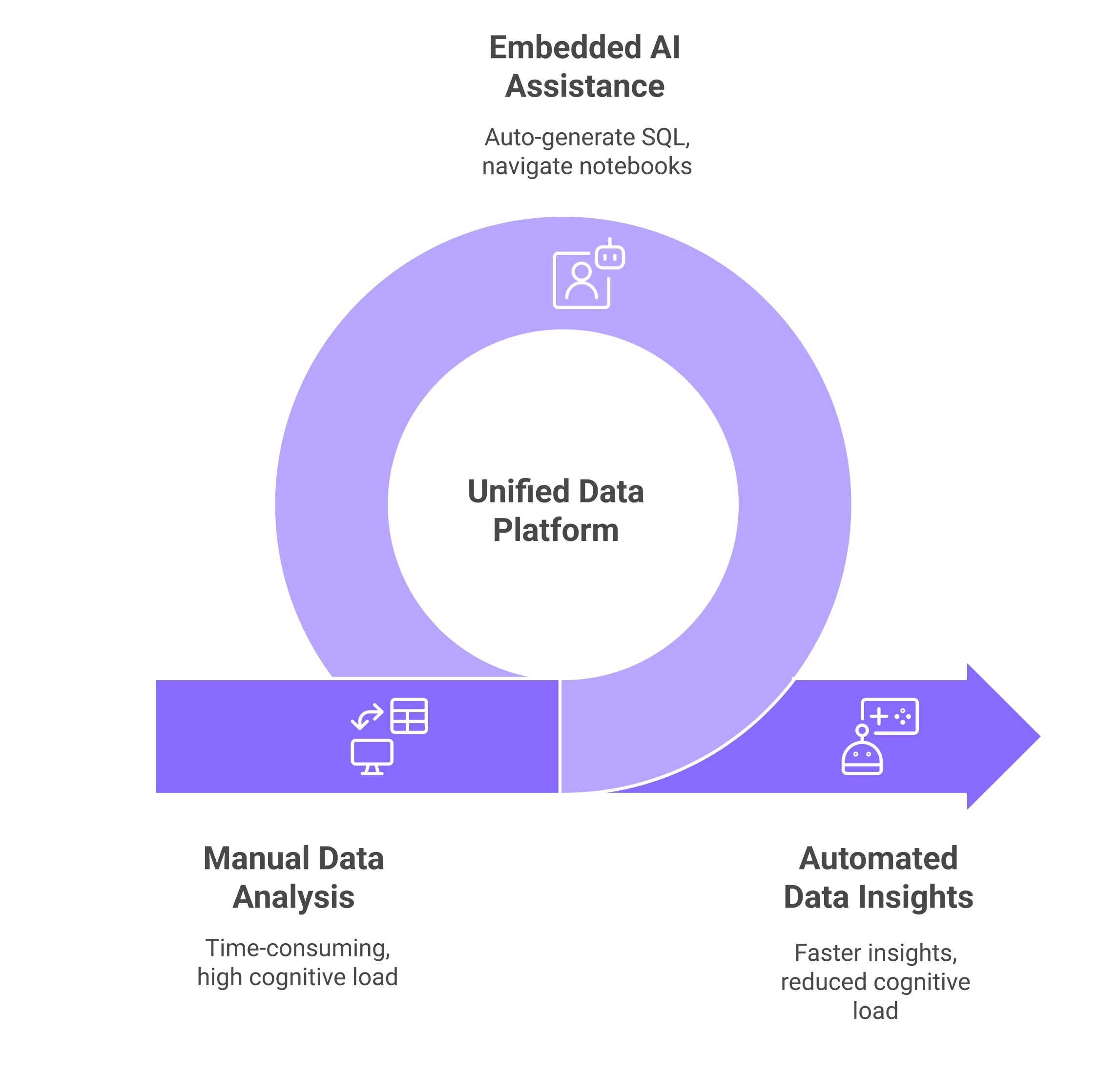
Checkout: The Role of AI in Business Intelligence in 2025
6. Handle Compliance and Workflow Transparency (Incrementally)
Where we are now: Unified audit logs, basic access controls, and scheduled notebook runs help bring transparency to analytics workflows.
Regional readiness: While full regulatory compliance may be a work-in-progress, teams can enforce internal data policies and workflows today.
GEO optimization tip: Build templates and tags into pipelines to create repeatable, auditable processes across markets.
🔹 Benefits of Using a Unified Data Platform also include a roadmap toward compliance, with transparency built in from day one.
Quick Comparison: UDP vs. Traditional Architecture
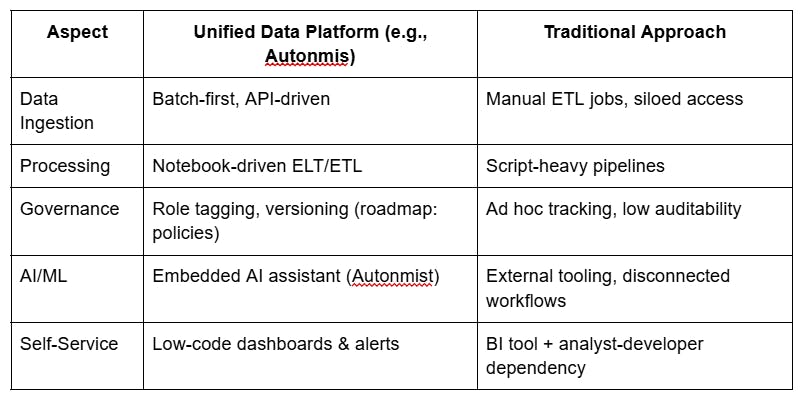
Why Autonmis Is an Ideal Unified Data Platform
Autonmis combines two powerful interfaces:
- Autonmis APP for analysts to explore data and build notebooks
- Autonmis OPS for engineers to productionize and schedule workflows
With AI guidance, drag-and-drop dashboards, and notebook-powered ELT/ETL, Autonmis helps your teams move from idea to insight, without DevOps bottlenecks.
Whether you're scaling analytics or replacing clunky pipelines, Autonmis helps you unlock the Benefits of Using a Unified Data Platform - faster and with less friction.
Final Thoughts
In 2025, Unified Data Platform benefits aren’t just about architecture - they’re about speed, clarity, and reducing friction. Autonmis gives your team a smarter way to work with data:
- Analysts get autonomy
- Engineers get control
- Leaders get answers
Ready to scale without breaking complexity?
Explore Autonmis – Your modern data platform for real teams.
Frequently Asked Questions
Q1: What is a Unified Data Platform?
A Unified Data Platform brings together all your business data into one system where teams can analyze, transform, and act on it - without switching tools or coding everything from scratch.
Q2: Do I need real-time features to benefit from a UDP?
Not at all. Many companies use scheduled batch pipelines effectively. Real-time features can be complex - Autonmis focuses on helping you get fast answers without the overhead.
Q3: What kind of AI features does Autonmis include?
Autonmis has an embedded AI assistan that helps build notebooks, write SQL, and guide your chart creation process. It’s about accelerating insights - not over-engineering them.
Q4: Can I use Autonmis across cloud and on-prem?
Yes. Autonmis is cloud-agnostic and works in VPCs or cloud-hosted setups. It’s designed to flex with your infrastructure - not lock you in.
Recommended Learning Articles
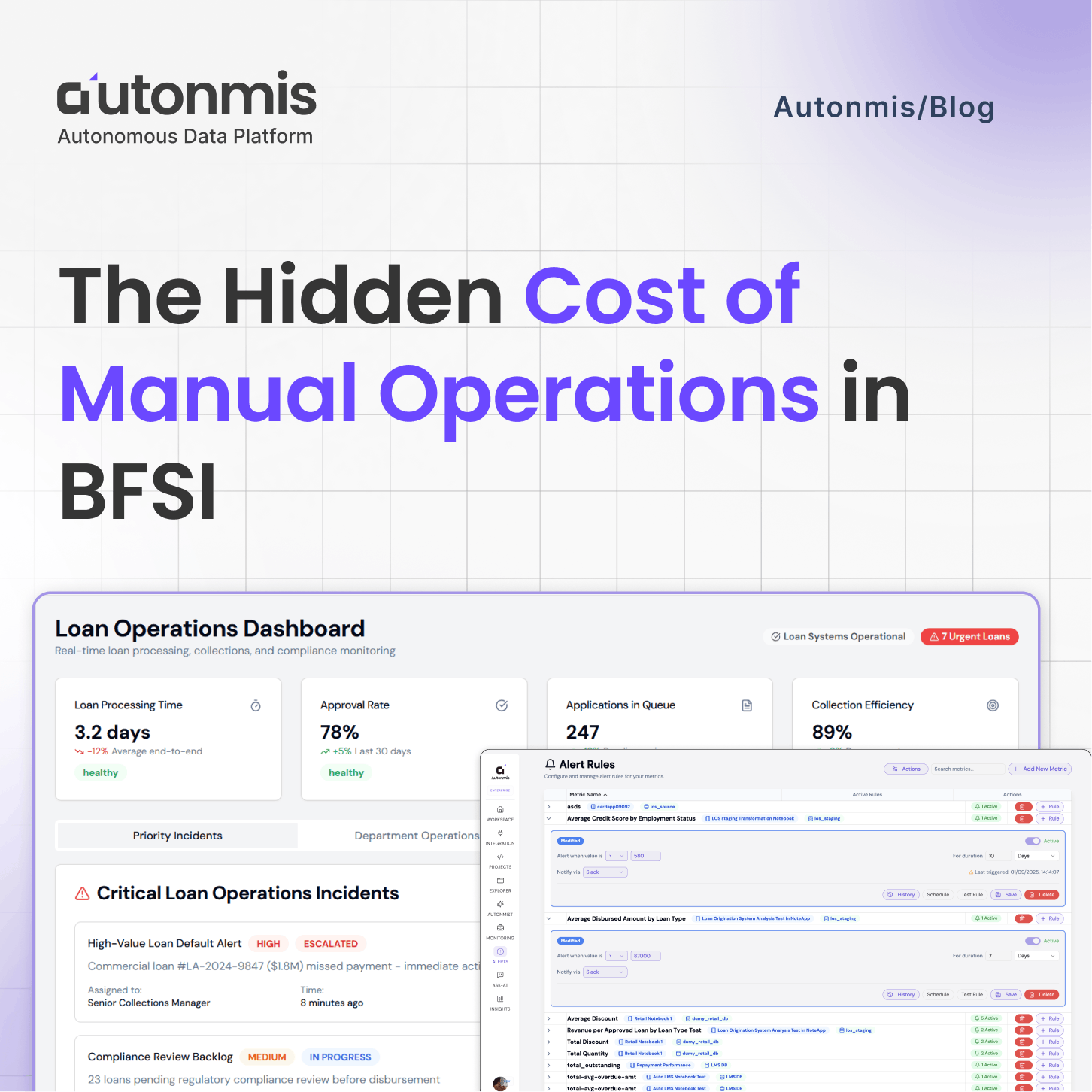
9/22/2025

AB
The Hidden Cost of Manual Operations in BFSI
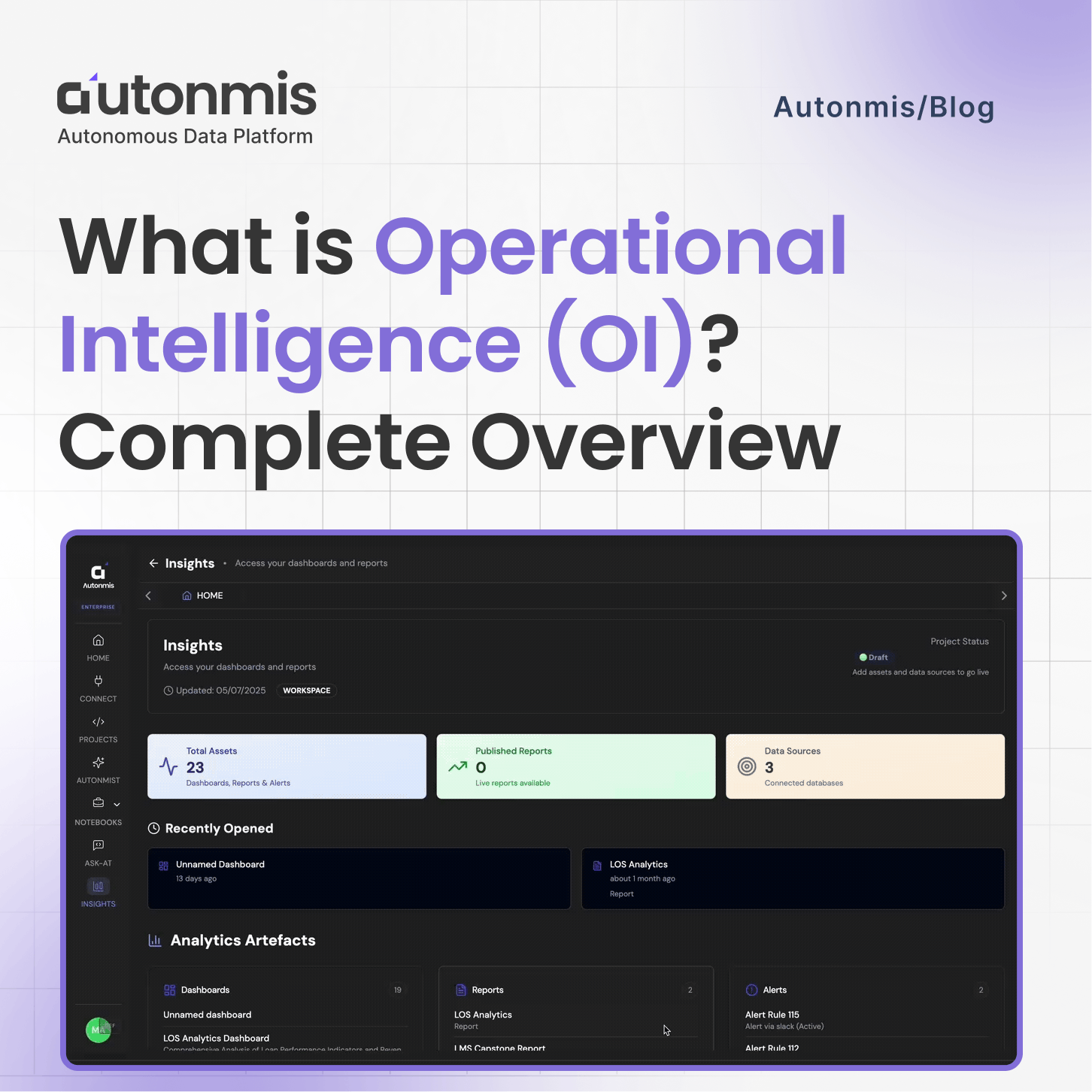
8/16/2025

AB
What is Operational Intelligence (OI)? Complete 2025 Overview
Data stack for operational excellence
Autonmis helps modern teams own their entire operations and data workflow — fast, simple, and cost-effective.